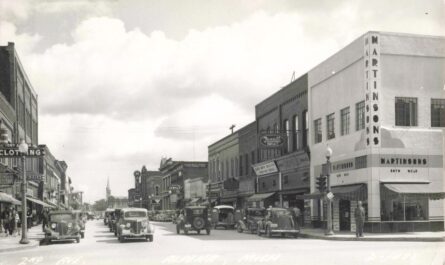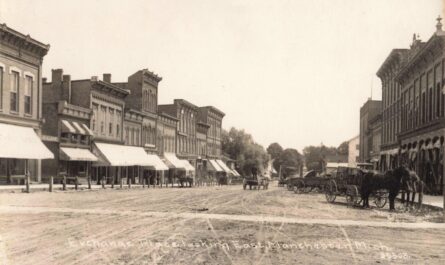At the northern edge of Little Bay de Noc stands Gladstone, Michigan. This small Upper Peninsula town played a much larger role in Michigan’s industrial rise than its size suggests. Known for shipping, railroads, sawmills, and precision manufacturing, Gladstone Michigan history reveals the hardworking spirit of the U.P.
The Founding of Gladstone
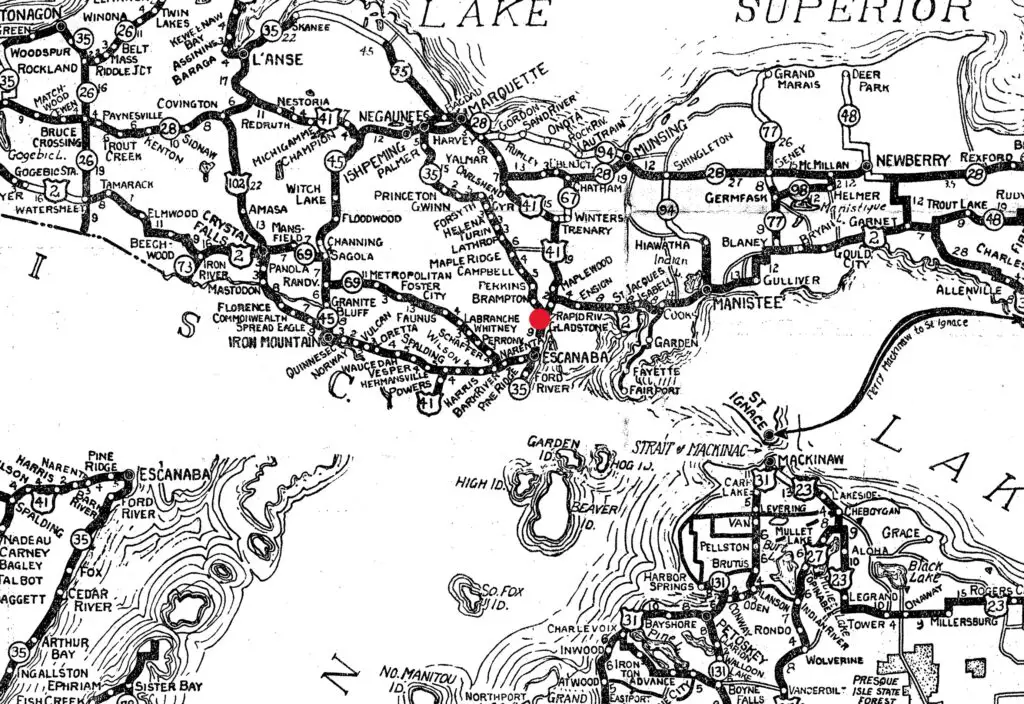
Originally named Minnewasca by the Soo Line Railroad, the town was quickly renamed Gladstone, honoring British Prime Minister William Ewart Gladstone. The Soo Line saw the location’s strategic value for rail and shipping. Soon, trains and ships converged here, creating a booming hub for commerce.
Video – Gladstone Michigan History: Where Railroads, Lumber, and Steamships Built a Town
Step back into a video montage of Gladstone, Michigan’s early days through rare photographs from 1890 to 1940. Once a thriving hub for the Soo Line Railroad, the N.W. Cooperage Company, Marble Arms Manufacturing, and busy harbor docks, Gladstone helped fuel Michigan’s rise during the industrial boom.
See how this Upper Peninsula town balanced hard labor with lakeside recreation at Tourist Park Beach. Watch now and see the history unfold.
Soo Line: The Railroad Lifeline
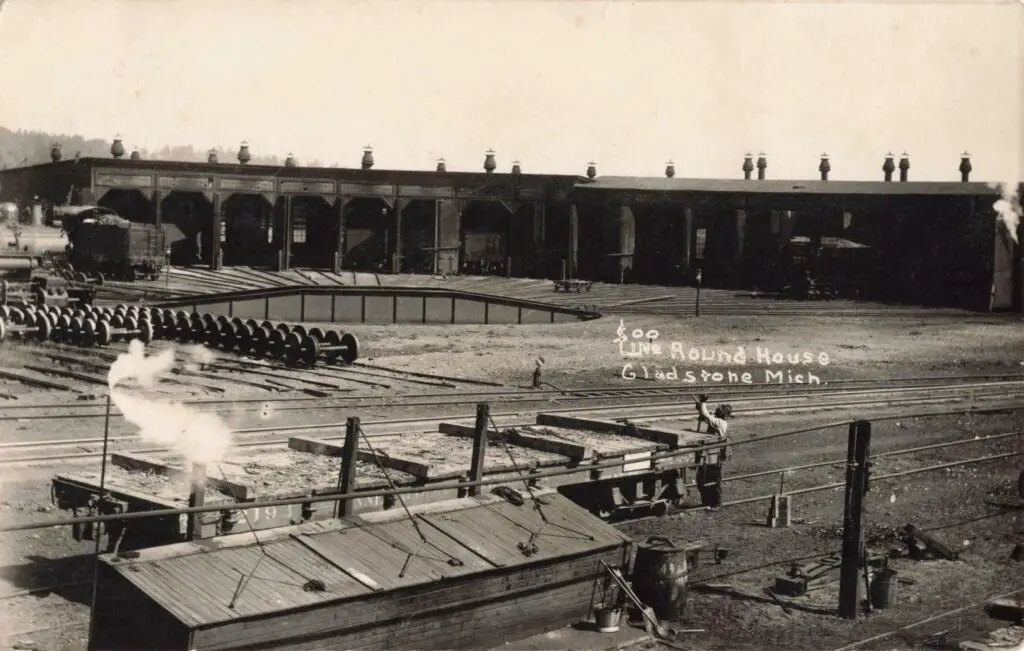
Gladstone quickly became a critical point for rail traffic. The Soo Line Roundhouse and Depot kept locomotives operating year-round. The roundhouse allowed for repairs, while a nearby snowplow cleared the tracks during harsh Michigan winters. Freight trains moved iron ore, copper, coal, and lumber across the Midwest, connecting the Upper Peninsula to national markets.
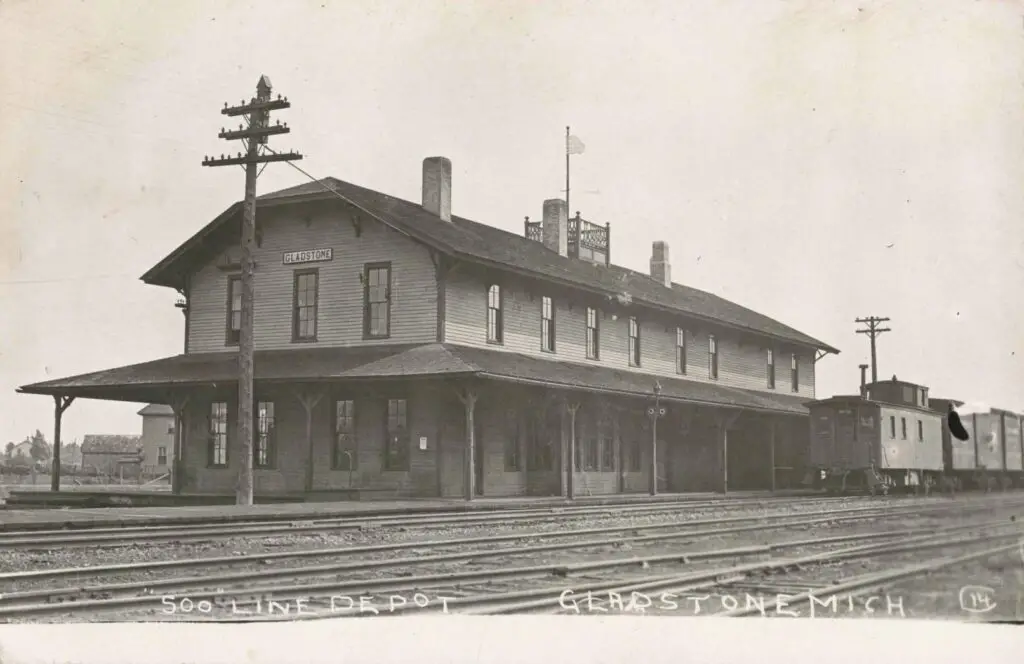
The depot also served as a lifeline for people. Workers, business travelers, and families passed through the station, making Gladstone a true gateway to the U.P.
Lumber and Cooperage: Fueling the Economy
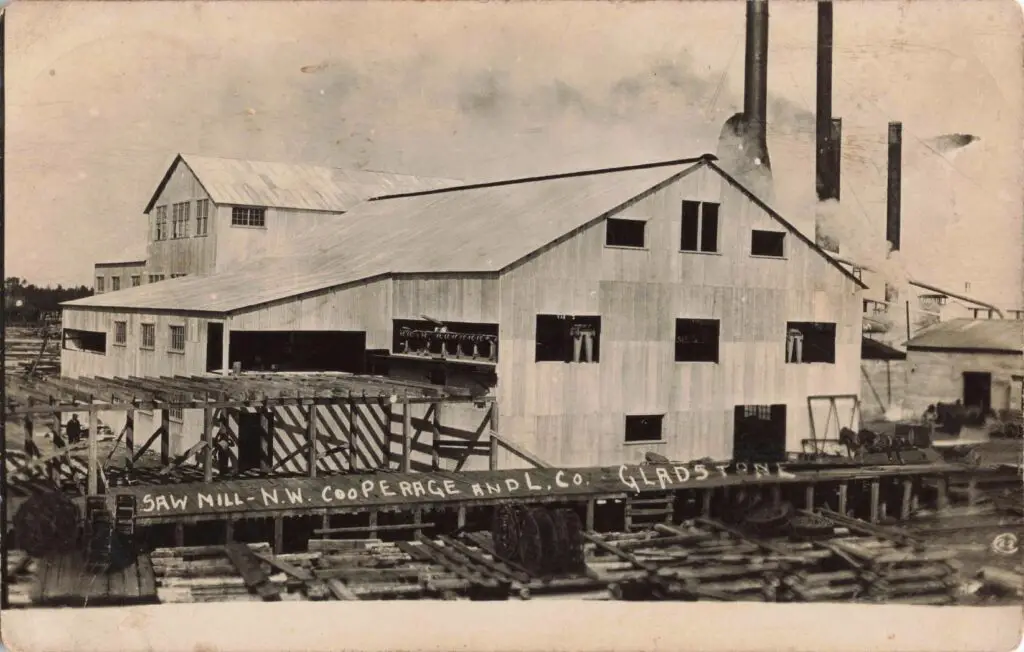
Gladstone sat amid rich timberlands. The N.W. Cooperage and Lumber Company processed endless loads of white pine and hardwoods. Workers floated logs into the bay and guided them into the mill yard. Inside, steam-powered saws cut planks and staves, which were then shaped into barrels, shingles, and other wood products.
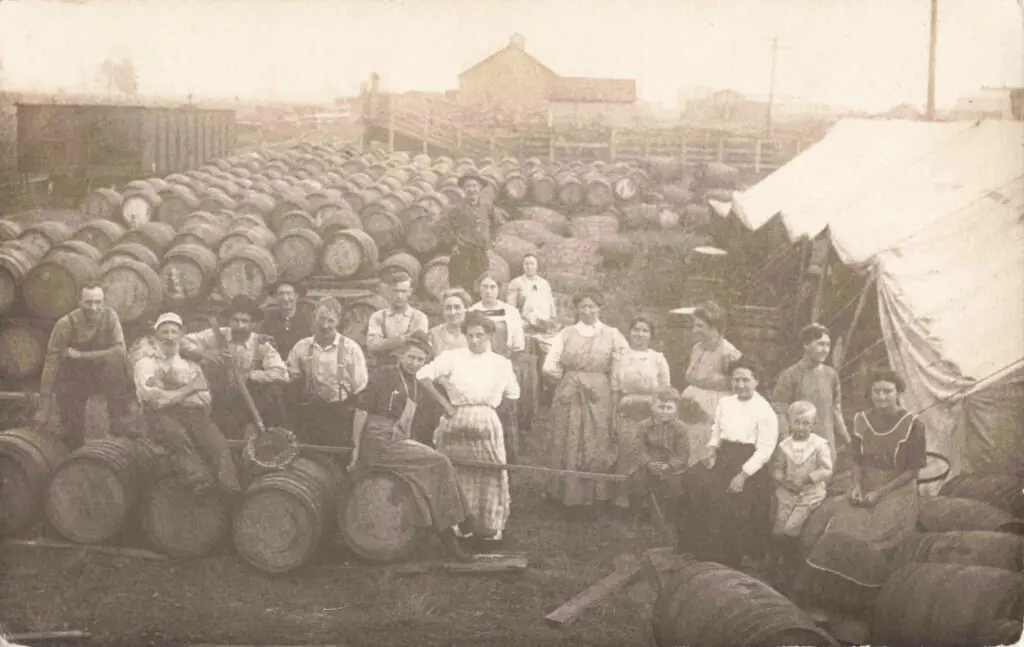
The cooperage business tied Gladstone to larger industries across the nation. Barrels from Gladstone carried everything from fish to oil, making the mill a vital piece of the national economy.
Marble Arms: Precision Manufacturing
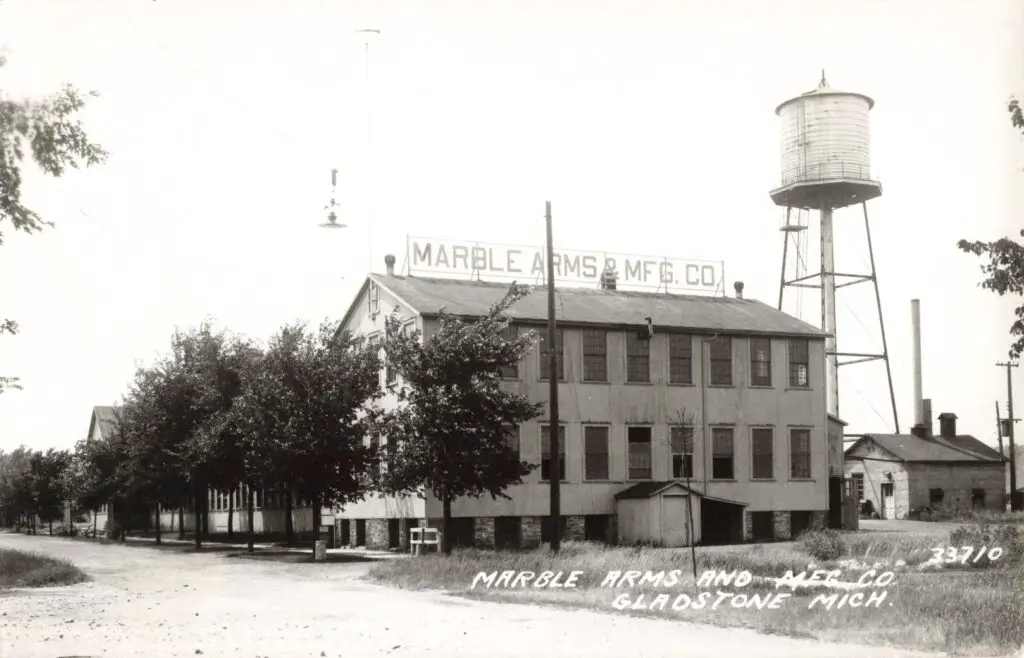
Gladstone also made a mark in precision manufacturing. The Marble Arms and Manufacturing Company became famous for producing patented gun sights, knives, and outdoor gear. Hunters, sportsmen, and military users across the country relied on Marble’s products. The plant brought specialized jobs to town, diversifying the industrial base beyond lumber and rail.
Powering Progress: The Electric Light & Power Dam
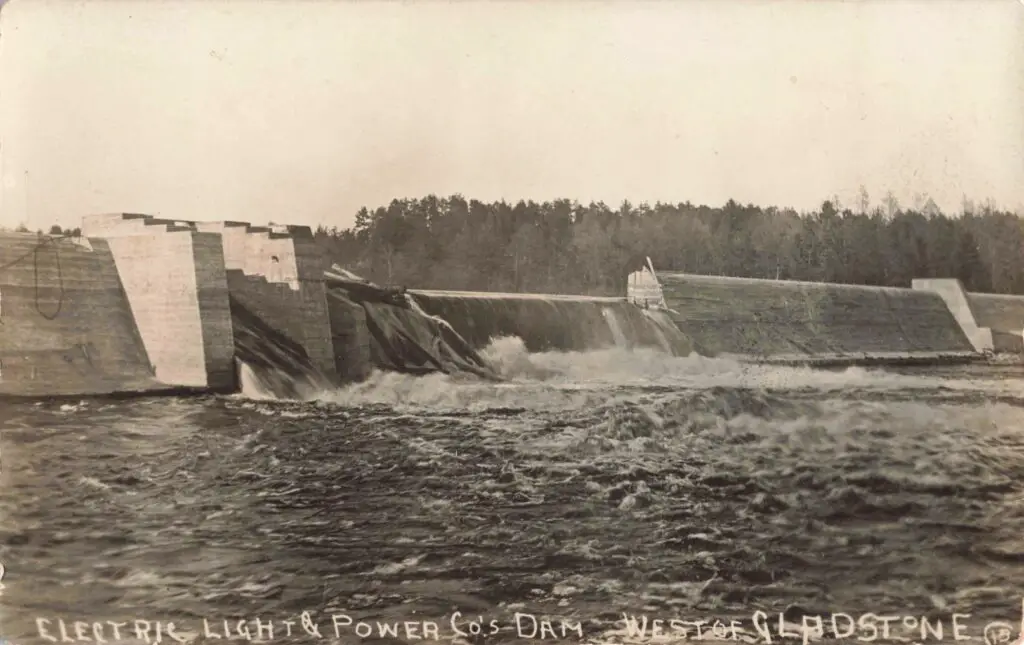
Early electric power gave Gladstone an advantage over many nearby towns. The Electric Light and Power Company’s dam, built west of town, provided steady electricity to run mills, power homes, and light the growing city. This early investment in energy helped Gladstone’s businesses compete and prosper.
The Harbor: Ships and Commerce
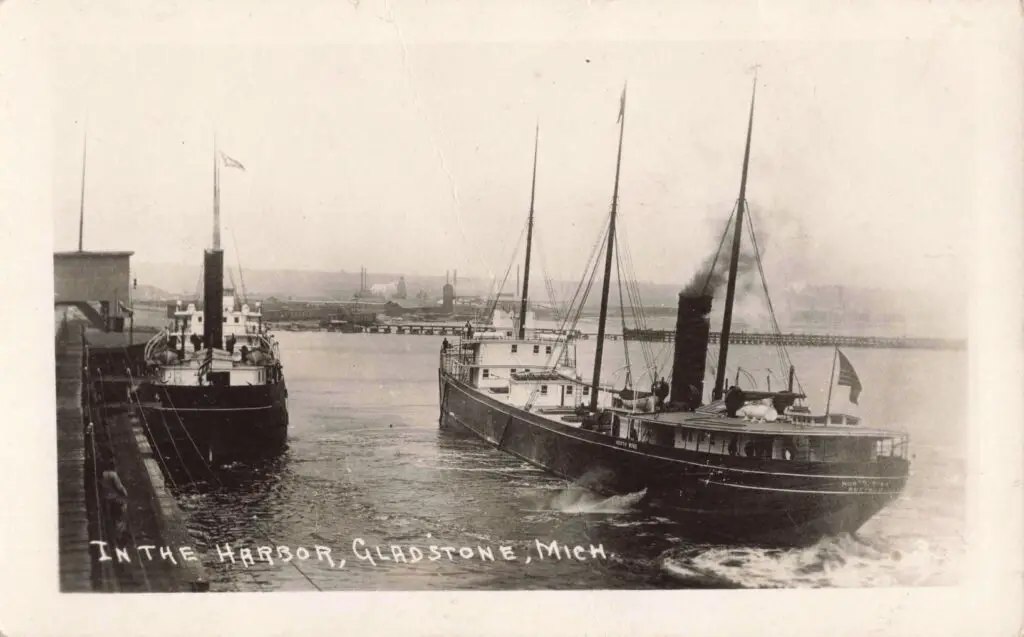
Gladstone’s location made its harbor essential. Steamships like the North Wind docked regularly, carrying iron ore, copper, and timber to other Great Lakes ports. Merchant’s Dock became a busy point for both freight and passengers. Goods moved efficiently by both rail and water, cementing Gladstone’s role in Michigan’s industrial corridor.
Recreation at Tourist Park Beach

Amidst the hard labor of mill work and shipping, residents found time for simple pleasures. Tourist Park Beach became a favorite local retreat. Families gathered on the sandy shore, children waded into the bay, and residents relaxed on summer afternoons. It offered a balance to the demanding pace of work life.
A Town Shaped by Industry and Water
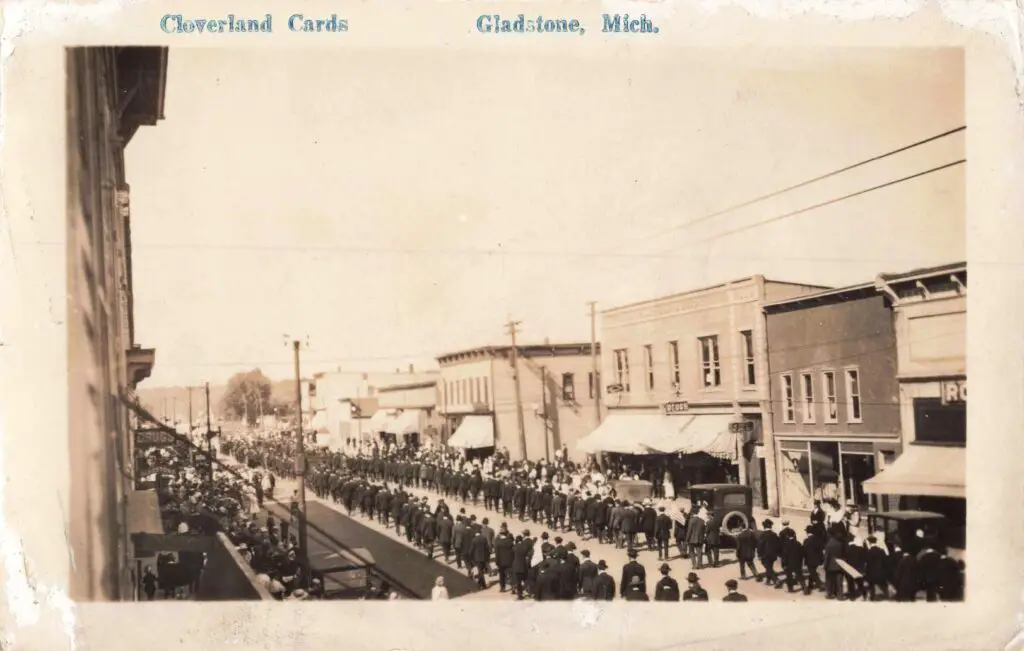
Gladstone Michigan history reflects a blend of industrial ambition and community life. With railroads, sawmills, factories, and a bustling harbor, it served as a microcosm of Michigan’s wider economic story. The town’s early success was built on the power of the Soo Line, the vast northern forests, and the bay itself.
Today, much has changed. Yet the echoes of Gladstone’s early days remain visible in its historic structures and the memories preserved in rare photographs like these.


